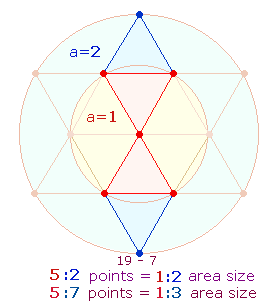The Letters of the Latin and the Elizabethan Alphabet
NUMERICAL &
FACTORAL VALUES
Latin Alphabet
|
Lt. |
A |
B |
C |
D |
E |
F |
G |
H |
I |
K |
L |
M |
N |
O |
P |
Q |
R |
S |
T |
V |
X |
Y |
Z |
|
NV |
1 |
2 |
3 |
4 |
5 |
6 |
7 |
8 |
9 |
10 |
11 |
12 |
13 |
14 |
15 |
16 |
17 |
18 |
19 |
20 |
21 |
22 |
23 |
|
FV |
1 |
2 |
3 |
4 |
5 |
5 |
7 |
6 |
6 |
7 |
11 |
7 |
13 |
9 |
8 |
8 |
17 |
8 |
19 |
9 |
10 |
13 |
23 |
Elizabethan
Alphabet
|
Lett. |
A |
B |
C |
D |
E |
F |
G |
H |
I/J |
K |
L |
M |
N |
O |
P |
Q |
R |
S |
T |
V/U |
W |
X |
Y |
Z |
|
NV |
1 |
2 |
3 |
4 |
5 |
6 |
7 |
8 |
9 |
10 |
11 |
12 |
13 |
14 |
15 |
16 |
17 |
18 |
19 |
20 |
21 |
22 |
23 |
24 |
|
FV |
1 |
2 |
3 |
4 |
5 |
5 |
7 |
6 |
6 |
7 |
11 |
7 |
13 |
9 |
8 |
8 |
17 |
8 |
19 |
9 |
10 |
13 |
23 |
9 |
By kind
permission of their author, Monsieur Gilles Esposito-Farese, I provide two
online-programs for counting numeric
values, one for the Latin
alphabet, one for the Elizabethan alphabet.
Examples of
Gematria:
Ovid's and
Shakespeare's Epitaphs
I also include the programs for counting factoral values: Latin, Elizabethan.
FACTORAL VALUES
The factoral value (FV) of a number is
identical with a prime number or the sum of 2 and more prime
factors: NV 7 = FV 7; NV 8 = 2*2*2 = FV 6.
Successive
additions of numerical and factoral values reveal the inner order of numbers
which can be recognized from their ratios. For example, the numbers 1-21 add up to 231, their factoral values to 165, the ratio between the
factoral sum (FS) and numerical sum (NS) is 3*11*(5:7).
The ratio numbers have
relevance in two ways: They can be regarded as independent entities or as
subdivided parts of the numerical value. In the first case the result of the
example is 5+7 = 12 (external ratio), in the second 5+2 is 7 (internal ratio). The
example given here especially concerns the double-rhombus of the tetraktys star
with its 5+2 points and 21 components:
|
|
It's worth mentioning
that the composite number 127 is contained in the 7-digit number 1234567 = 127*9721.
